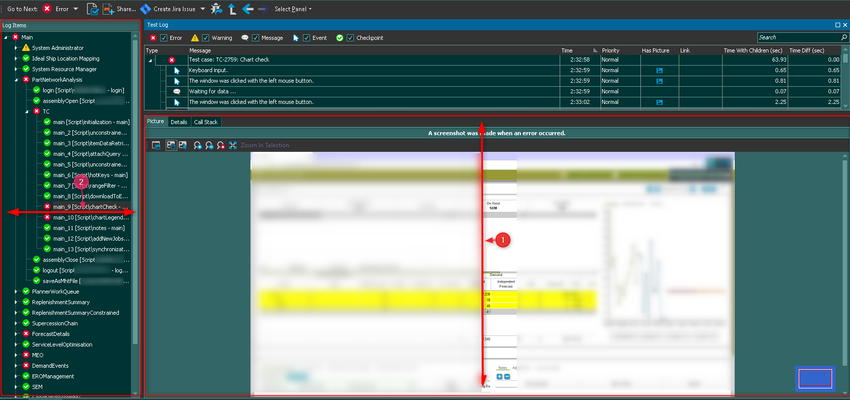Ability to customize report summary page to include Company Branding / Logo
A good to have feature would be if the Log report summary can include a logo of your respective company. Branding is important to many organizations and we see this as an advantage when the PDF can be shared with a specific logo.1.8KViews24likes1CommentAdd feature to create Bug/Issue in Azure DevOps from TestComplete
I had check the TestComplete documentation and could not find any feature to Create Bug/Issue in Azure DevOps from TestComplete logs directly. So can you implement this feature in TestComplete as it would be helpful to automate the process of posting bug on failure. As currently I can see it is only possible to create issue in Jira, Bugzilla and QAComplete only.242Views11likes8CommentsAzure DevOps Advanced Integration Options
Azure DevOps seems to be a popular option these days. Please consider adding the following as a feature in the near future. 1. Post Bugs from Test complete to Azure DevOps 2. Post Work Item from TestComplete to Azure DevOps 3. Upload Test Plan from TestComplete to ADO.699Views9likes0CommentsRename Log Items
Hi there, we have a scenario where a single script decides which tests run and then runs the tests. This causes all logs to have the same name: Script Test Log [ScriptUnit\scriptName] It would be great if this script could rename the log items. More information: http://community.smartbear.com/t5/Getting-Started-with/Rename-test-logs/m-p/116832 Greetings, vat1.5KViews8likes0CommentsLog location
Log files can take up lots of space on a HDD You have the option to limit the number of log files kept, but this is not always the answer you are looking for The logs could be stored in another location possibly a network location which will save resources on the local computer (would store locally if location not available - drive offline)1.3KViews7likes1CommentLimit Amount of Logs Kept by Time Frame
Instead of limiting the number of logs kept by Test Complete by a count, it would be nice if it they could be limited by a time period. For example, keep the last Month of test logs. This would be useful for users who run a high volume of tests in a short amount of time, but would still like to keep their output logs under control and accessible.457Views6likes0CommentsSharing test results - Extended Time
While the new sharing results options are quite handy, for an enterprise scenario the 2-week window is too less. An option for unlimited time would be needed. Please consider increasing the time limit duration. Also, the share option saves company information in the Smartbear server. We need an option that will save the log locally without the smartbear URL.636Views6likes0CommentsInclude Screenshot in the summary log report as an evidence report
Good to Include Screenshot in the summary log report as an evidence report This helps the readability of the execution It can be extracted and share the results to the manual team It acts a TC document which can be used an KT document for the new joiners It acts as a proof for raising a bug incase of failure1.8KViews6likes3CommentsAdd the ability to automatically save the width and height of blocks in the log viewer.
When I check logs, I always have to: enlarge the block with the screenshot to immediately see which elements are in action expand the test case tree on the left to see which test case we are checking at the moment. I suppose that other users also suffer from such inconveniences, and maybe they have other wishes to view the logs. That's why I think it should be possible to adjust the display once and keep it. So that you don't have to change the display of the log window every time you run test cases.530Views5likes0Comments

